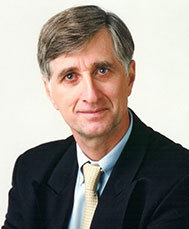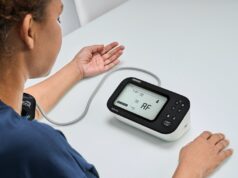
At Cardiostim, the European Heart Rhythm Association (EHRA) and the Heart Rhythm Society (HRS) outlined their new joint consensus statement on cardiac resynchronisation therapy (CRT) device implantation and follow-up. Cardiac Rhythm News talked to Jean-Claude Daubert, professor of Cardiology and Vascular Diseases, University of Rennes 1, Rennes, France, and one of the founders of EHRA, about the new consensus statement.
Why is there a need for a consensus statement specifically on CRT implantation and follow-up?
In the current literature, there are multiple guidelines coming from both sides of the Atlantic on clinical indications for CRT but no consensus recommendations on the practical aspects of this widely used therapy (there were more than 200,000 devices implanted over the world in 2011). EHRA and HRS thought that the time had come to produce an international consensus statement that had the primary objective to fill in the knowledge gaps with consensus opinion where clinical evidence is less than clear.
What are the main areas that it covers?
There are six sections in the consensus document:
- Pre-implant evaluation: this section defines the parameters (clinical, biology, imaging, co-morbidities and life expectancy assessment) that are important to assess before the implantation in the view of the future response to CRT, and how to manage medications just before the implantation procedure with a particular focus on antithrombotics.
- CRT device implantation, with practical recommendations on anaesthesia, lead implantation sequence, coronary venography, left ventricular (LV) lead selection and placement (empiric or targeted), defibrillation testing, upgrading procedures, and information on new technologies.
- Pre-discharge evaluation and device programming: this includes recommendations on perioperative complications (how to recognise and how to handle?), the limited role for atrioventricular (AV) and interventricular (VV) delay optimisation (not recommended), and the importance of achieving the higher rate (ideally 100%) of effective biventricular capture.
- CRT follow-up: the electrophysiologist must keep in mind that the CRT patient is primarily a heart failure patient and that a close degree of co-operation between the heart failure specialist and electrophysiology follow-up physician in the follow-up of the CRT recipient is recommended. Recommendations concern the periodicity of in-clinic follow-up visits (every six months recommended), the complementary role of remote monitoring (note that no recommendations were issued on haemodynamic monitoring given the uncertainty on clinical relevance), the importance of upward titration of heart failure drug therapies to maximise response to CRT, and the importance of evaluating improvement in cardiac function.
- Response to CRT and management of non-responder: if a patient is defined as a non-responder, a systematic effort to identify and treat reversible causes has to be done, including optimisation of pharmacological therapy, device reprogramming (AV and VV delay optimisation may be useful at this stage), treating arrhythmias by radiofrequency ablation (atrial fibrillation, frequent premature ventricular complexes), implantation of new lead (s), or considering LV endocardial pacing. In patients who continue to experience heart failure symptoms after treating potential reversible causes to non-response, alternative treatment options should be considered such as placement of a LV assist device or cardiac transplantation.
- Special considerations: this is in regards to several important topics, including follow-up of the CRT patient with atrial fibrillation, renal dialysis patients, discussion on CRT-defibrillator (CRT-D)/CRT-pacemaker (CRT-P) upgrade/downgrade, device replacement, cost-effectiveness, end of life, patient education and engagement.
The new consensus statement recommends that the right ventricular lead should be implanted first-what is the reason for this recommendation?
This is because of the risk of paroxysmal AV block and asystole due to right bundle branch block trauma during lead manipulation in patients with pre-existing left bundle branch block (LBBB).
The statement also recommends that the risks and benefits of CRT-D versus CRT-P therapy should be discussed with the patient prior to a CRT being implanted. What factors need to be considered when deciding between a CRT-P and a CRT-D?
A candidate for CRT implantation has to be informed on the risk-benefit ratio of the two types of CRT devices. The potential benefit of adding a defibrillator function (decreased risk of sudden death) has to be balanced with the higher risk of early and long-term complications, lead fragility, and risk of inappropriate shocks.
It is recommended that patients should stay overnight after receiving a CRT for observation-are there any patients who may require particular attention?
The patient staying overnight in hospital is a minimum requirement. Patients with perioperative complications, in particular exacerbation of heart failure and/or acute renal failure, need particular attention and a longer stay in hospital.
The main cause of non-response is probably improper patient selection. Subgroup analyses from large controlled studies (MADIT CRT, REVERSE and RAFT in particular) have shown that patients with QRS
Beyond patient selection, what is important in practice is to identify reversible causes of non-response, namely loss of biventricular capture due to frequent arrhythmias (atrial fibrillation or premature ventricular complexes) or LV lead dysfunction.
Suboptimal lead configuration or suboptimal device programming can also play a role and be corrected
Overall, what are the most important messages from the consensus statement?
The most important messages are contained in table I in the paper (published in EP Europace and in HeartRhythm “Summary of consensus recommendations”.
There are 43 recommendations in this table, with three different strengths of recommendations: “Is recommended”, equivalent of class I in guidelines, “May be useful”, equivalent of class II, and “are not recommended” equivalent of class III.












